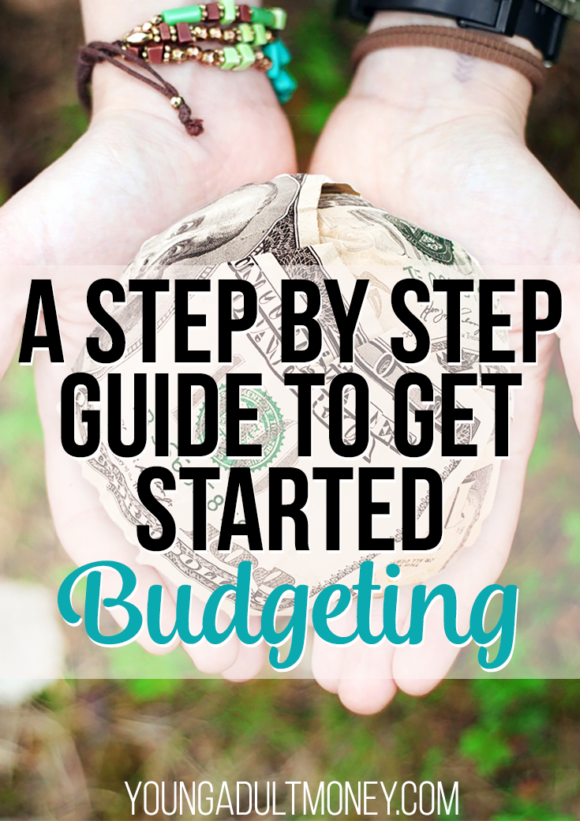 Friends, as a converted and frankly evangelical budgeter, I am here to tell you the deep dark magical mystical secret of budgeting. The ONE CRAZY TRICK that will allow you — yes, you with the entry-level job and the student loan payments — to start a successful budget when you’ve never been able to do it before.
Friends, as a converted and frankly evangelical budgeter, I am here to tell you the deep dark magical mystical secret of budgeting. The ONE CRAZY TRICK that will allow you — yes, you with the entry-level job and the student loan payments — to start a successful budget when you’ve never been able to do it before.
Ready?
Come closer!
Here’s the secret!
There isn’t one.
Really. Budgeting seems intimidating when you’ve never done it. And lots of us resist getting started because it seems hard, boring, and/or like it will slowly suck all the fun out of life. But take it from me: the only difficult thing about budgeting is deciding to get started doing it.
When I finally took the budgeting plunge a couple of years ago, my life changed for the better almost immediately. My budget became a tool that directed money towards my priorities and away from the random spending that was derailing my finances for no good reason. I wish I’d done it years earlier. But in retrospect, one of the things stopping me was that I didn’t really know how to budget for any further out than my next paycheck. So for those in the same boat, here’s a step by step guide to getting started.
1) Choose Your Tools
You can use a spreadsheet (here’s our free automated budget spreadsheet, software like YNAB, or a pencil and a notebook. But whatever you choose, prepare to commit to using it for at least a few months. Don’t write a budget on the back of an envelope and then lose the envelope. (Not that I’m speaking from personal experience or anything!)
A successful budget will be a budget you can actually consult as you implement it. So choose a place to write it down where you can go back and look at it often to see what’s working and what might need changing in the future.
2) Assess Your Monthly Income
Budgets are based on a simple principle: don’t spend more than you earn. Obviously, then, you need to know what you earn! For many people, that number doesn’t vary much. If you earn a salary then it stay stable from month to month.
But some people have a highly variable income. If you work as a freelancer, or if your income depends on tips, or in other situations, you might have very different numbers to work with each month.
If you have a variable income, budgeting gets a little harder. You can solve the problem in one of two ways:
- You can “live on last month’s income.” With this plan, you make July’s budget based on the money you earned in June. If June was a good month, then you can spend more in July; if June was a bad month, then you can tighten up your July budget to reflect what you actually earned.
- Or, you can make your budget by assuming an income number on the low end of your normal spectrum. If you normally make anywhere from $2000 to $3000 in a month, then make a budget that only spends $2000. If you earn more, you can use the extra for rainy-day savings.
OK, whether you’re on salary or whether you’re a tipped waitress, you now have a number you’re working with: your monthly income that you’re going to budget with. Great first step. Write it down!
3) Assess Your Obligations
Notice how I didn’t say “assess your spending”? That’s because in this step you’re only going to look at what you have to spend every month. That includes:
- Rent or mortgage payment
- Debt minimums (car loan, student loan, etc)
- Childcare (if applicable)
- Insurance premiums
- Utilities
Write these these necessary payments down, and add them up. Hopefully, the number you get will be much lower than the “income” number from step 2! Subtract obligations from income and you’re left with the amount of money you have to make the rest of your budget.
4) Budget for Your Goals
For me, this is actually the most satisfying part of writing a budget. Let’s say you started out to budget $3000 in monthly income. $1000 just got subtracted to cover obligations. Now you have $2000 left.
At this point, you can think about what you want to work towards. If you have debt, you can decide to make bigger payments, beyond the minimum. You can also decide to save for an emergency fund, for retirement, for a house down payment, for a fabulous trip to Europe, or whatever else.
Write down numbers that correspond to these goals. For example:
- $250: Extra student loan payment
- $250: Emergency fund savings
- $100: Roth IRA
- $50: New laptop fund
The numbers will vary based on how strongly you feel about the goal and on your income. But write them down. Then subtract the total, and what you’re left with is a number we’ll call….
5) Discretionary Spending
This is the part of your budget that will probably vary the most from month to month. Write down all the things you can think of that you spend money on, including:
- Groceries
- Restaurants
- Entertainment
- Cable
- Gas
- Clothing
- Pets
- Haircuts/makeup/personal
- Gym
Some of these might be a fixed amount (like cable and gym memberships) but others might vary from month to month. For your first couple of months, try writing down a figure that seems reasonable to you — “Groceries: $300,” “Clothing: $25,” or whatever.
Because discretionary spending can change so much, it’s both the most dangerous spot in the budget and the best place to look if you need to cut back. Food spending, in particular, tends to get out of control for a lot of people. You have to eat, but if you’re spending more than you’re earning, you can probably eat much more cheaply in order to stay on budget.
Once again, add all these numbers up and subtract the total.
6) Review Your Draft Budget
Let’s say, again, that you have $3000 of income to budget with. After writing down all your fixed and approximate expenses, how are you doing? Did all those expenses add up to $2500? Or did they add up to $3500?
If your first budget draft leaves you with “leftover” money, congratulations! You can go back to Step 4 and beef up what you’re budgeting towards your goals, either by making larger debt payments or putting more in savings.
If your first budget draft shows that you’re planning to spend more than you earn, you’re in trouble. You’ll need to cut back. The best choice is to ratchet down discretionary spending by letting go of inessential expenses. But you may also find that you need to be less ambitious about saving towards your goals.
At the end of your review, the amount you have budgeted should match your income. Now, you’re ready to put this plan into action.
7) Keep Calm and Budget On
Mike Tyson once said “Everyone’s got a plan, until they get punched in the mouth.” I’ve never been in a boxing ring, but I think your first month or two budgeting probably feel like that! All you can do is mentally prepare yourself for the fact that budgets need to be flexible.
“Stuff happens,” and you’ll need to respond in a very imperfect world. But that’s why the budget you built in steps 1-6 was organized from most to least important. If you need to spend on something that’s not budgeted for, that doesn’t mean your budget was a waste of time. It just means you need to move money from somewhere in the budget that’s non-essential (like entertainment or restaurants) to cover the unexpected expense.
8) Rinse and repeat
I think one reason why people don’t successfully budget is that the benefits of doing it don’t become apparent for a few months. In order to see the differences it will make in your finances and stress levels, you need to give it a chance to work. So, at the end of every month, look carefully at your budget. What worked? What might need adjusting? Go ahead and make the changes. But don’t abandon the budget itself.
Do you budget? If not, what’s holding you back? If you do, what tips or advice do you have for others who are just starting?


Excellent post. I’ve been using Mint for over a year. I like being able to see what I spend each month. It shows me where I’m doing good at and unfortunately where I need some work.
Budgeting for goals is a great idea. I have separate savings accounts with Capital One 360 for this purpose. It’s good to break down those big future purchases into monthly savings.
Great article Catherine! Was thinking about going back over my budget, just earlier today. I really like your format, as it gives me more ideas than I originally had.
I’ll be looking forward to more of your posts!
I’ve been using YNAB for budgeting for over 6 years and it has turned my life around. It is a great tool to see where your money has gone.
I think the most under funded category for most people is groceries. I always walk around the grocery store with my calculator (iphone) adding each item as I go along so I can stick to my $250 weekly budget (Family of 5).
I think it is a good idea to have an extra $50 “buffer” on your groceries so that you can accommodate for any extras that pop up during the month as well eg. blown light bulbs or batteries etc
#8 is key. Many people don’t realize that it takes a few months to really get into a budgeting groove. Your first few budgets are likely going to be way off – so don’t let that frustrate you or cause you to stop… push through! We find that most people really start to see good results around month three of budgeting.